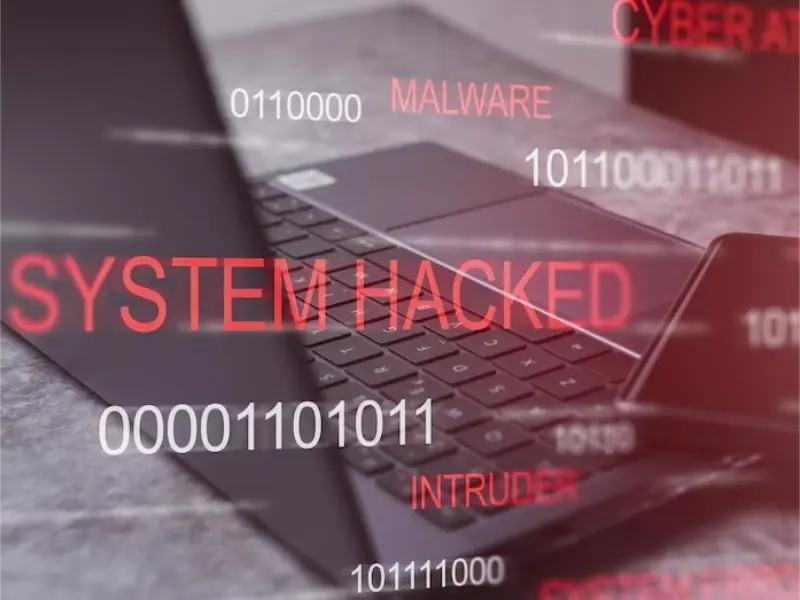- Ransomware is a type of malicious software designed to encrypt files on devices, making them inaccessible to users.
- The consequences of a ransomware attack include severe disruptions to an organisation’s operations, financial losses, reputational damage, and potential legal repercussions.
- Responding to ransomware attacks requires a strategic approach, including isolating infected devices, assessing the extent of the attack, notifying relevant stakeholders, etc.
Ransomware, a form of malicious software (malware), encrypts files on devices, rendering them unusable. Cybercriminals demand ransom payments, typically in cryptocurrency, in exchange for decryption. This blog explores the consequences of ransomware attacks, including operational disruptions, financial losses, and legal implications, while offering strategies for effective response.
What is ransomware?
Ransomware is a form of malicious software (malware) that is designed to encrypt files on a device, making the files and the systems that rely on them unusable. Malicious actors then demand a ransom payment, usually in the form of cryptocurrency, in exchange for decryption. These malicious actors may also make extortion demands by threating to release stolen data if a ransom is not paid, or may come back after the fact and demand an additional payment not to release stolen information.
There are two primary categories of ransomware. The more prevalent type, known as encrypting ransomware or crypto ransomware, locks the victim’s data by encrypting it and demands a ransom in exchange for the decryption key. The less common form, called non-encrypting ransomware or screen-locking ransomware, blocks access to the entire device’s operating system and displays a ransom demand instead of allowing normal startup.
These two types can be further classified into various subcategories. Leakware/Doxware is ransomware that steals sensitive data and threatens to publish it. Mobile ransomware encompasses all ransomware affecting mobile devices. Wipers/destructive ransomware threatens data destruction if the ransom isn’t paid, sometimes even if it is paid. Scareware aims to intimidate users into paying a ransom. It may impersonate law enforcement agencies or virus alerts, coercing victims into paying or downloading ransomware.
Also read: FBI Alerts on Escalating Threat of Dual Ransomware Attacks
What happens when ransomware attacks?
A ransomware attack can significantly disrupt an organisation’s operations, even with functional backups in place. Restoration efforts may span hours or days, leading to revenue loss or complete cessation during recovery. Organisations with compromised backups may take even longer to resume operations, exacerbating financial strain.
Data breaches or ransomware incidents can tarnish an organisation’s reputation. Customers may perceive such attacks as indicative of weak security practices, potentially prompting them to seek services elsewhere due to service disruptions or concerns about data security.
Ransomware poses an unforeseen financial burden, encompassing various costs. These include ransom payments, incident remediation expenses (such as hardware/software replacements and response services), insurance deductibles, legal fees, and public relations efforts. Additionally, there are hidden costs like increased insurance premiums and reputational devaluation.
During a ransomware attack, malicious actors encrypt files, rendering them and associated systems unusable. Failure to pay ransom can result in permanent data loss, necessitating data regeneration. Even if ransom is paid, decryption is not guaranteed, and the attack may have caused irreversible damage, requiring system rebuilding. Theft of sensitive data like trade secrets or Personally Identifiable Information (PII) can lead to legal repercussions or loss of competitive advantage.
Also read: Cyberattack on Change Healthcare sparks concerns over security
How to respond to a ransomware attack?
Immediately disconnect the infected device from the network to prevent the spread of the ransomware to other systems. This step is crucial in containing the attack and minimising further damage.
Conduct a thorough assessment of the attack to understand its scope and impact. Identify which files have been encrypted or locked by the ransomware and determine if backups are available for those files.
Inform key stakeholders within your organisation, including IT staff and senior management, about the ransomware attack. Depending on the severity of the incident, you may also need to involve law enforcement authorities and regulatory agencies.
Despite the urgency to regain access to encrypted files, paying the ransom is not recommended. There is no guarantee that the attackers will provide the decryption key, and paying the ransom only encourages further criminal activity.
If your organisation has backups of the affected files, initiate the restoration process from a clean backup source. It’s essential to verify the integrity of the backups to ensure they have not been compromised by the ransomware.
Use reputable malware removal tools to eradicate the ransomware from all infected devices thoroughly. Additionally, apply security patches and updates to strengthen the security posture of your systems and prevent future attacks.
Take this opportunity to review and enhance your organisation’s cybersecurity measures. Implement stronger access controls, such as complex passwords and multi-factor authentication, to prevent unauthorised access to sensitive data.
Report the ransomware attack to the relevant authorities, including local law enforcement agencies and regulatory bodies. Additionally, sharing threat intelligence with industry peers can help prevent similar attacks in the future.

